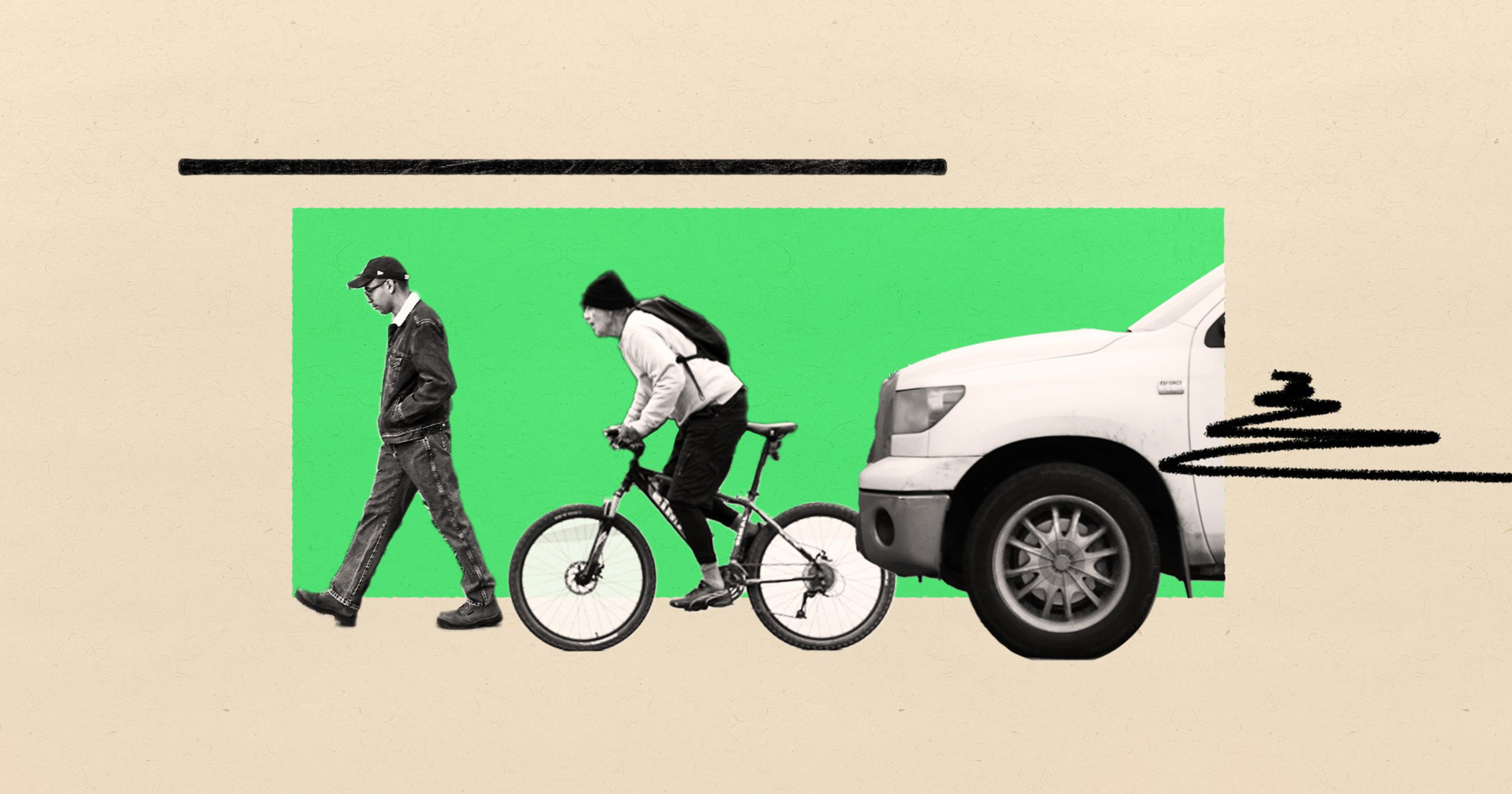Burrito Justice (John Oram) is San Francisco’s cargo bike dad and is most likely to be found making a map or a GIF on Twitter (opens in new tab) when not riding around with his family.
Valencia Street, from the perspective of everyone who uses it, is a problem of fluid mechanics. A lot of things are going on across all 82.5 feet of roadway on the Mission’s nightlife- and retail-filled street, and these traffic flows put pressure on one another.
Commercial trucks, rideshare and food delivery drivers compete with cyclists for this space, and given that Valencia is active almost 24 hours a day, seven days a week, it’s only getting worse. There is no enforcement against vehicles blocking bike lanes, even across the street from the Mission police station.
What if I told you I have come up with a solution that is better for bikes and businesses?
My proposal—let’s call it the Burrito Plan—is pretty simple: Convert one automobile lane of Valencia to a two-way cycle track (opens in new tab). That way, the other lane becomes a one-way pathway for cars, and the middle lane is dedicated to commercial loading and delivery (which is already largely happening from 19th to 26th streets). Under the Burrito Plan, cars still have access to Valencia, and the dedicated commercial parking and loading zones makes things easier for businesses. In short, the Burrito Plan is an equitable way to distribute the three main road users—cars, pedestrians and cyclists—that involves minimal disruption and low-cost barriers.
The Burrito Plan applies to any commercial corridor, not just Valencia. I would never drive to Hayes Valley or West Portal, because parking is a nightmare. But I’ll happily hop on my e-bike and ride there—they truly turn San Francisco into a 20-minute city. A lot depends on road width, but Clement Street in the Richmond and Irving Street in the Inner Sunset are great candidates for redesign under the Burrito Plan.
You can get an idea of what this looks like as a cross-section via Streetmix (opens in new tab) and 3D Streets (opens in new tab).
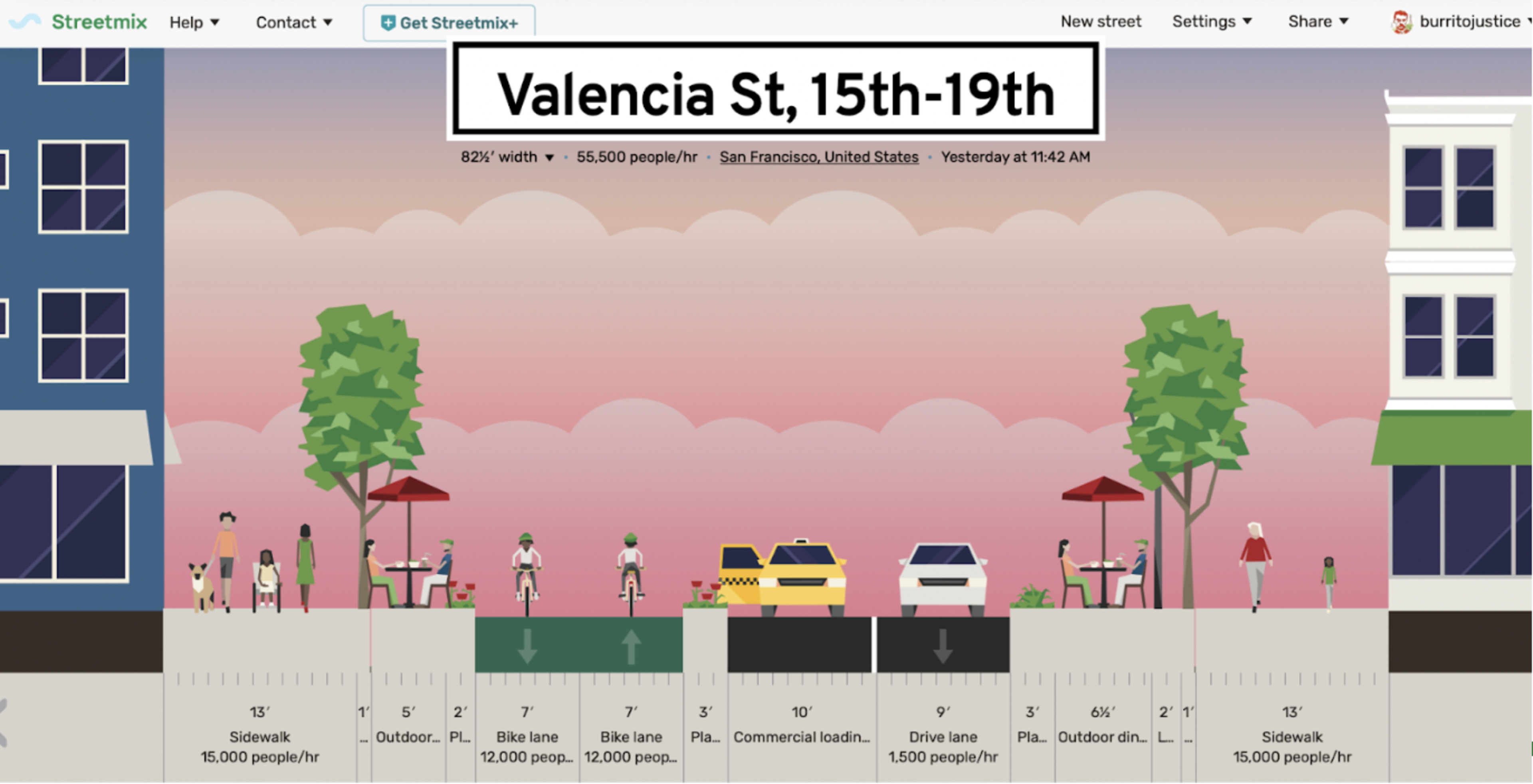
3DStreets takes a link to a Streetmix scene and extends it into the third dimension (opens in new tab). Pro tip: press ctrl-option-i to edit a scene even further!)

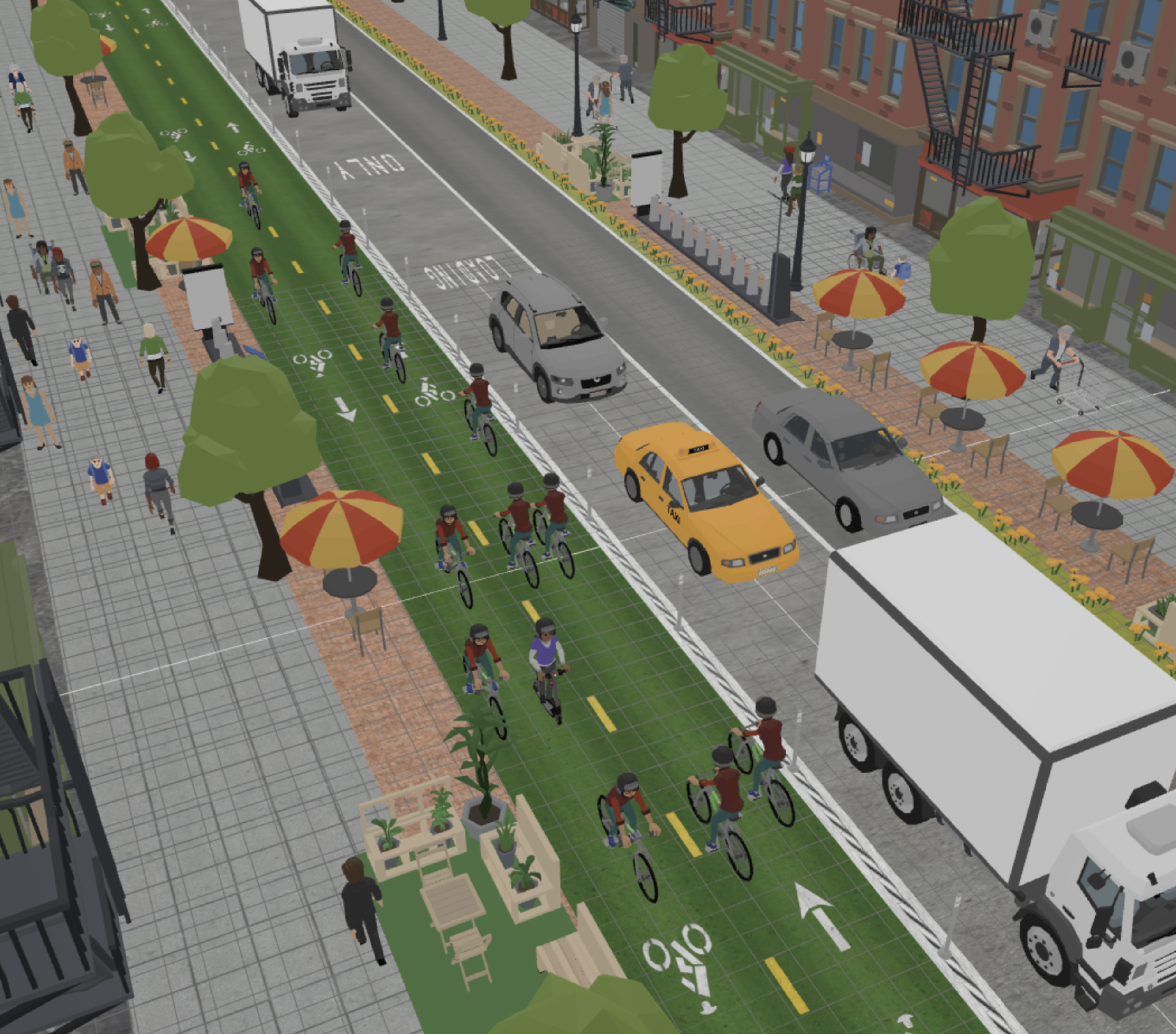
As my friend and transit advocate Luke Spray says, “cars are in fact a gas rather than a solid (opens in new tab).” Unless there is a physical barrier—and FlexPost bollards (opens in new tab), aka “vertical paint” don’t count—vehicles are going to come into bike lanes. While I applaud the “Just a Minute (opens in new tab)!” crew who block traffic while a car blocks a bike lane, this isn’t a scalable solution.
Rideshare, commercial loading and food delivery aren’t going away, and neither are parklets or cyclists. My kids recently told me they didn’t want to ride down Valencia because they don’t feel safe. Even I don’t feel safe—and I average 75 miles a week on my e-bike, all within San Francisco. So what do we do?
You may notice that the Burrito Plan bike lanes are very wide. This is a feature! Very Wide Bike Lanes make it possible for families or friends to ride beside each other, while allowing room for others to pass. Wide bike lanes are also safer for kids and riders of all ages.
A Very Wide Bike Lane can also serve as an emergency response lane for the fire department, much like the red bus lanes do. This should be a model for a bike network throughout the city.
We’d also need accessible blue zone parking on each block—perhaps at the end of each block—and even allow accessible parking on the loading zone. We could also add mid-block bulb-outs (and even islands) to make it easier to cross the streets as suggested in early SFMTA plans in 2018 (opens in new tab).
Valencia’s fluid-mechanics problem has been apparent for a long time, as far back as when the 26-Valencia Muni line ran past Bombay Bazar and Viracocha. Running from Market Street to a sharply angled intersection with Mission Street, its 17 blocks contain a retail corridor, a dining destination and—notwithstanding the imminent disappearance of Arinell Pizza—a late-night spot. It’s got schools, residences, churches, dive bars and at least one high-end Japanese denim store. Valencia is a problem, but also an opportunity.
SFMTA’s 2019-2020 proposal (opens in new tab) for parking-protected bike lanes along the rest of Valencia Street was better than the current situation, extending south the protected bike lanes that already exist on Valencia from 15th Street to Market. However, the pandemic upended that plan, so the SFMTA is restarting from scratch. Speaking with SFMTA officials, I learned that because of parklets going permanent (opens in new tab), the agency is now planning for center-running bike lanes.
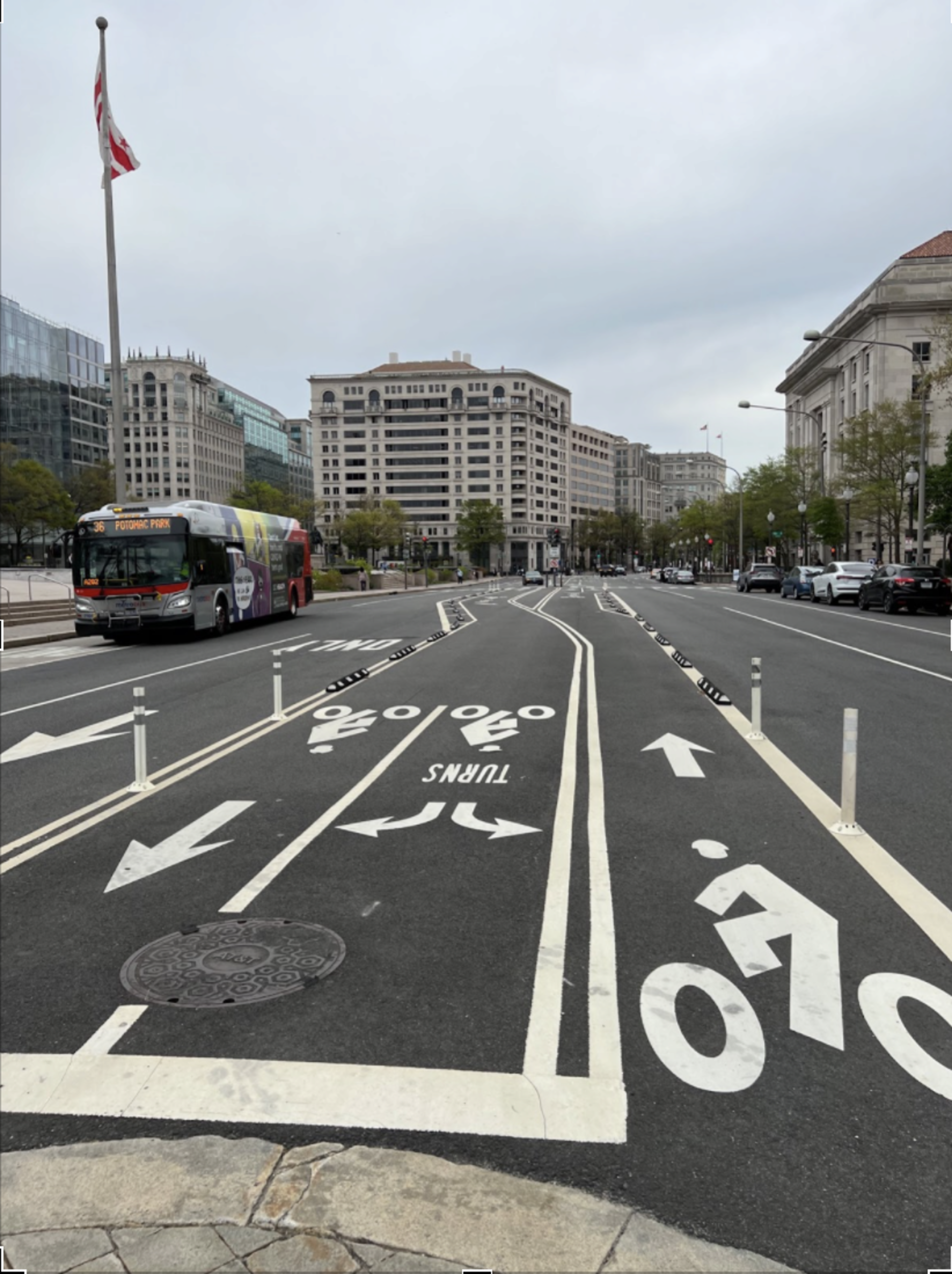
While just about anything is better than the status quo, I think San Francisco can do much better than that, especially since these center lanes are likely to be “protected” by paint and hit posts. (Again, cars are a gas.) Also, a center lane seems more suited for getting people through Valencia, rather than encouraging cyclists to stop and shop along it.
The costs of implementing it are minimal. The commercial parking and loading lanes provide more physical protection for the bike lanes, making paint and posts a realistic first step for getting this in place. Most importantly, traffic signals won’t need to be moved or installed.
Freeing up parking spots for parklets has been a success, and I suggest we throw parking to the proverbial curb, allocating more space to walk, for bike parking or for parklets. Just think of them as wider sidewalks.
While I can make lots of arguments about this plan being environmentally responsible, safer for families and riders of all ages, and just nicer than what we have now, let’s face it: If we don’t have businesses on board, it won’t happen. So, to be blunt, this is good for business!
It may not surprise you to learn that I made an animated, zoomable map (opens in new tab) and a GIF.
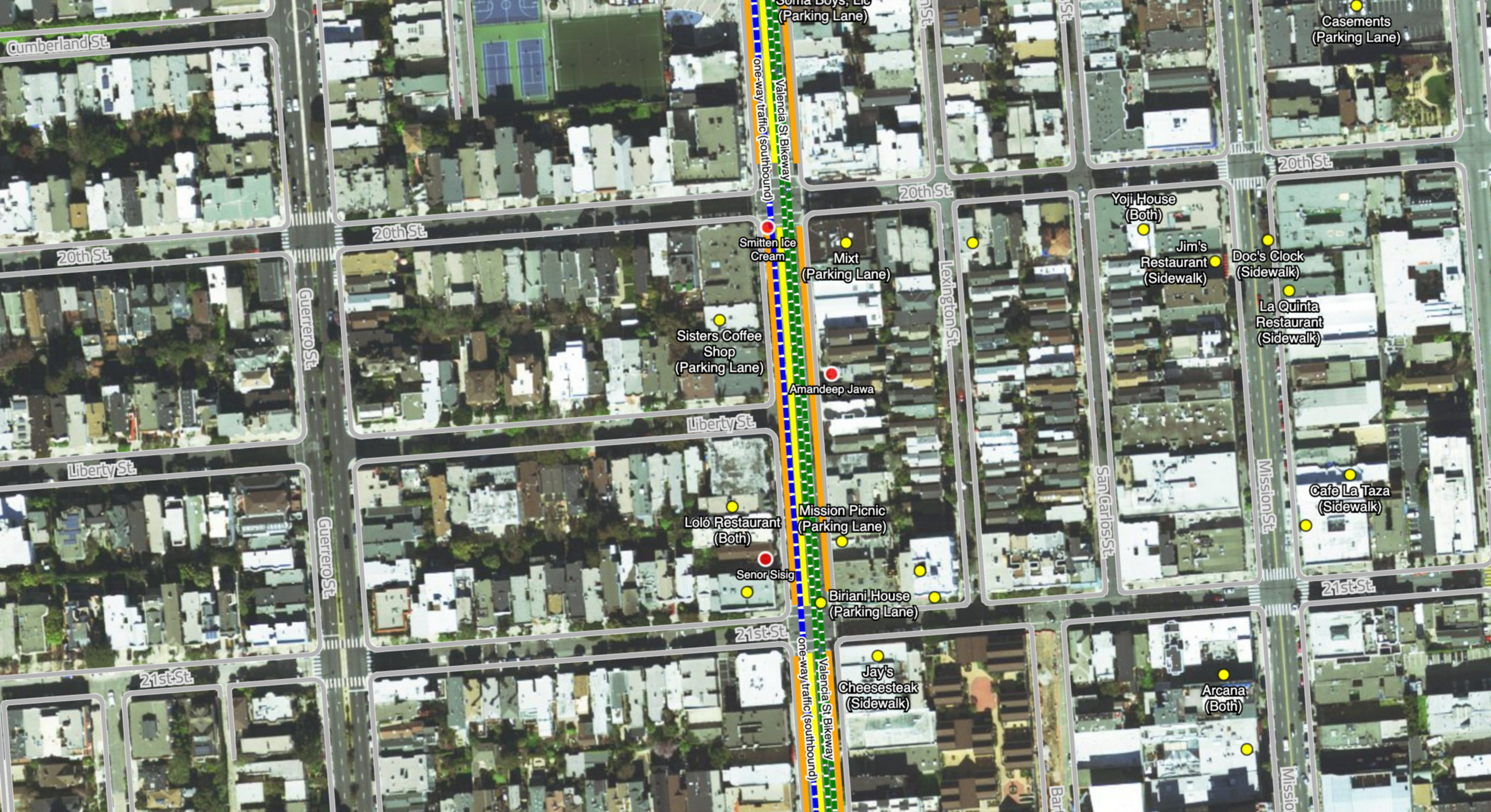
San Francisco (and Mayor London Breed) have seen what Paris and its mayor, Anne Hidalgo, have achieved as they make more room for cyclists. Paris has done such a good job (opens in new tab) with bike lanes that even Amsterdammers (opens in new tab) are showing envy! Over the past decade, we’ve seen city after city realize that cyclists help their businesses and their bottom line (opens in new tab).
And this was before electric bikes came along! If you haven’t ridden one, you may not appreciate it, but e-bikes are changing everything. You’ve seen the boom of cargo e-bikes along Valencia—they truly turn San Francisco into a 20-minute city, especially for families (opens in new tab). E-bikes make it a breeze for more people to get to Valencia, from neighborhoods both farther away (and higher up).
Over the past decade, we’ve seen city after city realize that cyclists help their businesses and their bottom line (opens in new tab). Whether electric or acoustic, bikes are good for business and make for a better city, especially when bike parking is plentiful. Whether electric or acoustic, bikes are good for business and make for a better city, especially when bike parking is plentiful. It’s worked before: The Vancouver Downtown Business Association, which was at first adamantly against bike lanes when they were installed, have since admitted (opens in new tab) they were wrong and acknowledge bikes are good for business.
They may also help solve the fluid-mechanics problem in a way that is good for business. City after city has discovered that you can get many more cyclists on a stretch of street than drivers and park far more bikes in front of businesses than cars, yet still provide access for loading and deliveries of food and humans. SFMTA planners, throw down your pens and mice and stop work on the center lane.
With the Burrito Plan, everyone gets their lane!
Follow Burrito Justice on Twitter at @burritojustice
